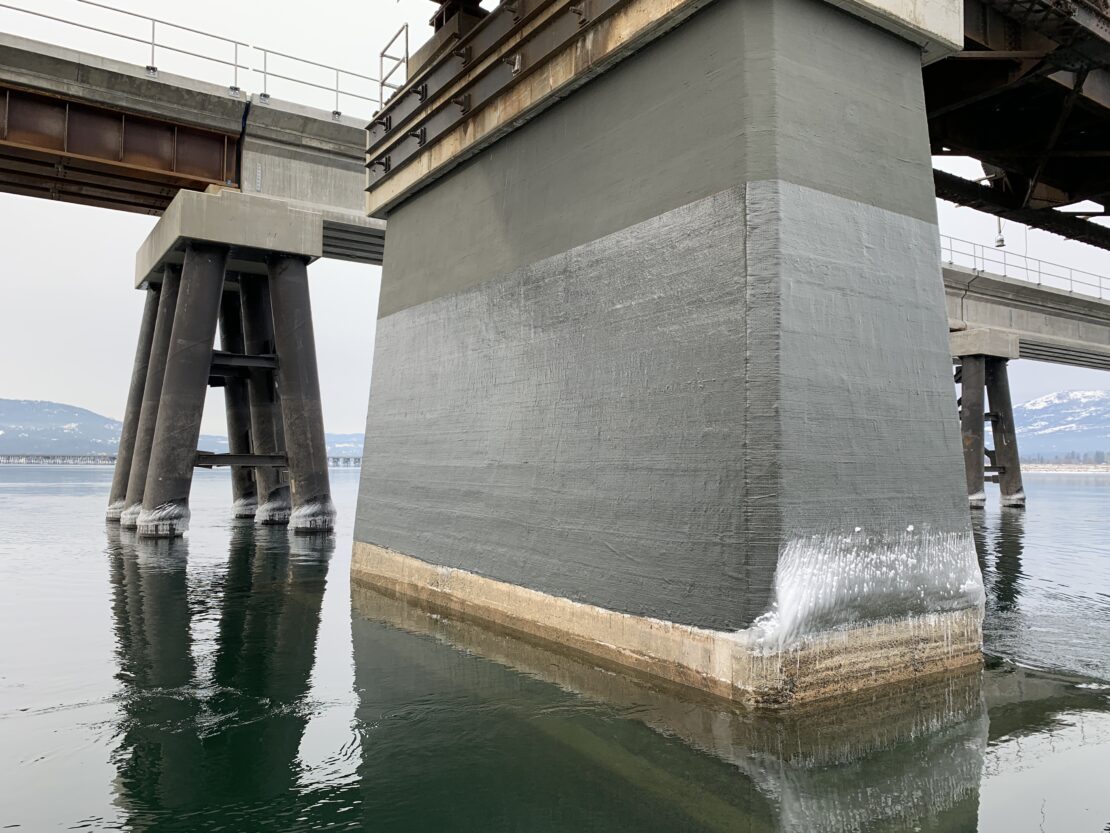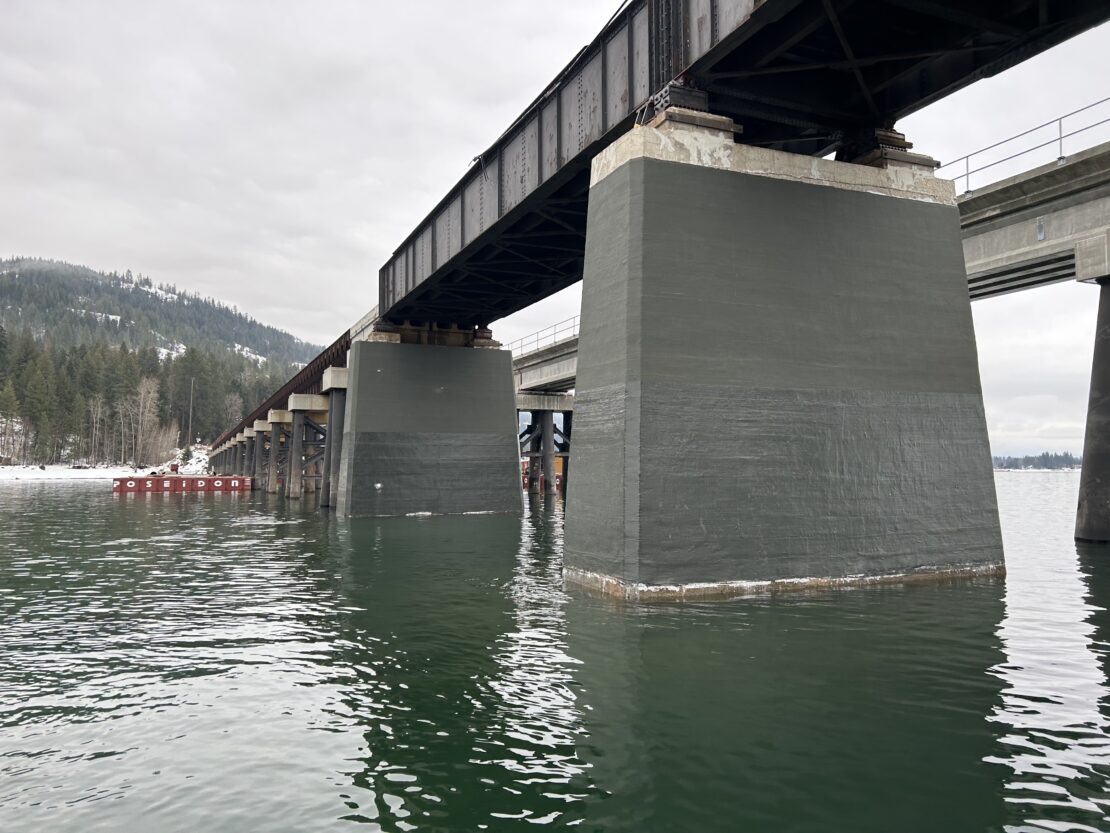Bridge Piers Rehabilitation
BACKGROUND TO REHABILITATION PROJECT
Lake Pend Oreille in the northern Idaho Panhandle is the largest lake in the state and has a surface area of 148 square miles. It measures 43 miles long and 1,152 feet deep in some areas.
The lake also acts as a drinking water reservoir with the level of water fluctuating throughout the year, with the water at its lowest levels during the winter.
A bridge crosses the expanse and is supported by nine 100-year-old concrete piers that measure around 20 ft tall and 25 ft wide. Over the decades the piers deteriorated and were in need of rehabilitation.
The bridge itself was taken out of service after the construction of a new bridge, but engineers wanted to ensure it was still in working condition, should it be required for backup or emergency use.
It was determined that the piers, which are almost entirely exposed during the winter months, did not require additional strengthening. However, the existing concrete substrate showed extensive wear caused over the bridge’s lifespan due to the harsh weather exposure. The structure was intended to serve as an emergency bridge in the event the newly constructed crossing needed to be closed. To ensure the continued longevity of the bridge, concrete repair and the application of FRP (fiber reinforced popolymer) were proposed.
CHALLENGES FACED BY THE TYFO INSTALLATION TEAM
To ensure as much of the piers could be rehabilitated as possible, it was necessary to complete the repairs during the harsh winter months. This meant the contractors had to construct hoarding shelters on floating platforms for each pier that was being wrapped. These shelters were continuously heated throughout the installation and the curing of the FRP. The team also had just four months to complete the project due to subsequent works scheduled to take place.
The substrate of the piers was very rough and required significant concrete repair prior to the FRP installation. Fyfe’s QA/QC Manager assisted the contractors in the engineering for this process to ensure an even and sound substrate was achieved.
SUMMARY
- 100-year-old concrete piers rehabilitated with Tyfo® FRP system.
- Work carried out during extended periods of below freezing temperatures to enable access to the pier surface (low water levels).
- Floating and enclosed platforms constructed to enable the installation.
- Project completed by a 10-person team over four months.
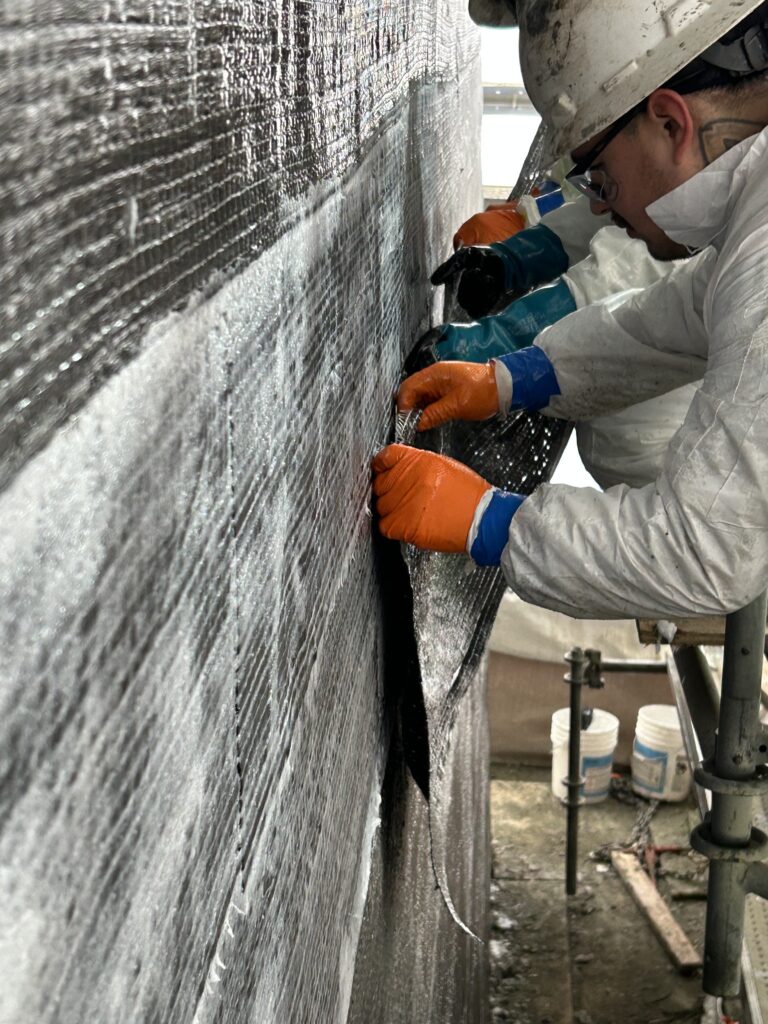
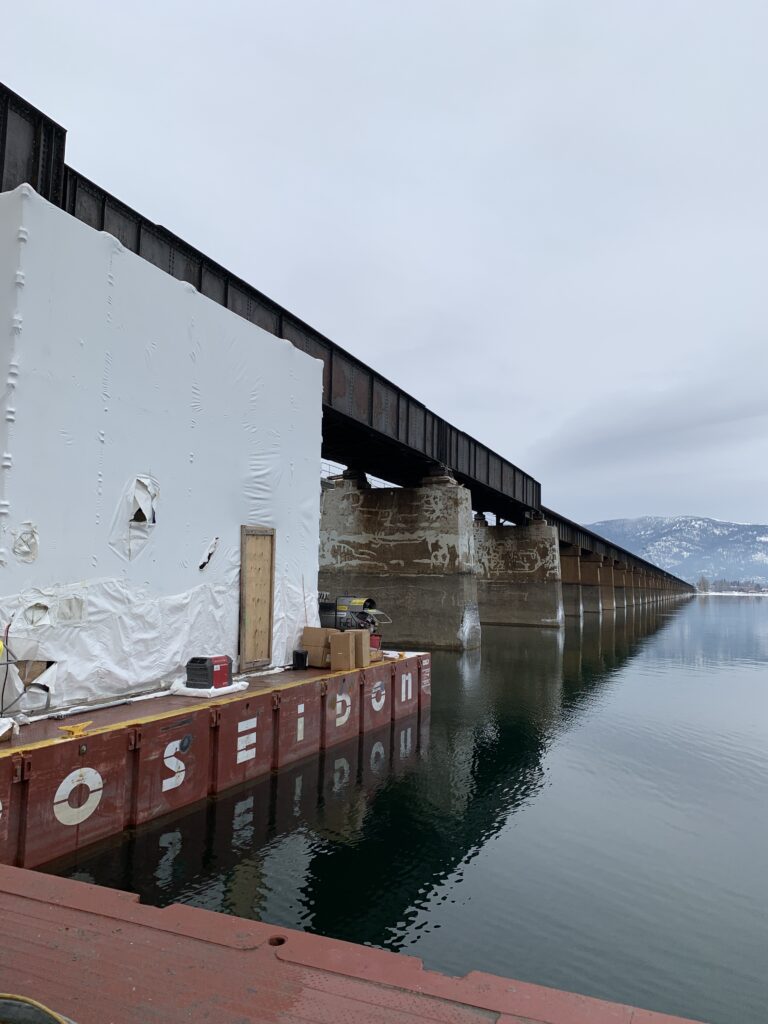
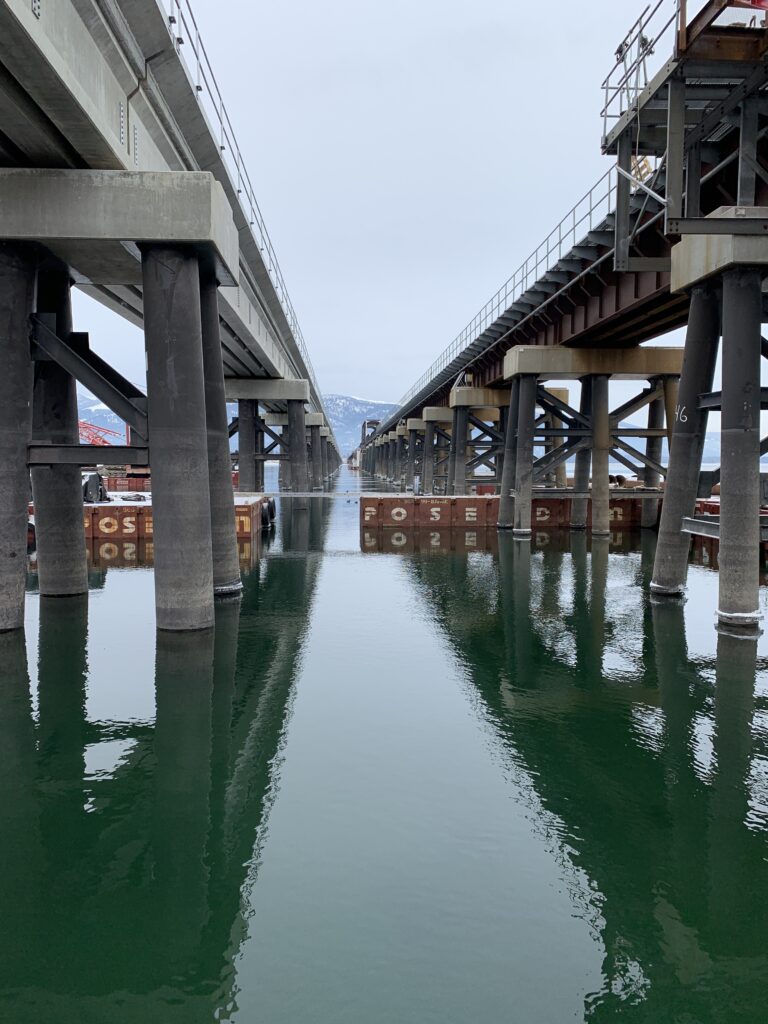
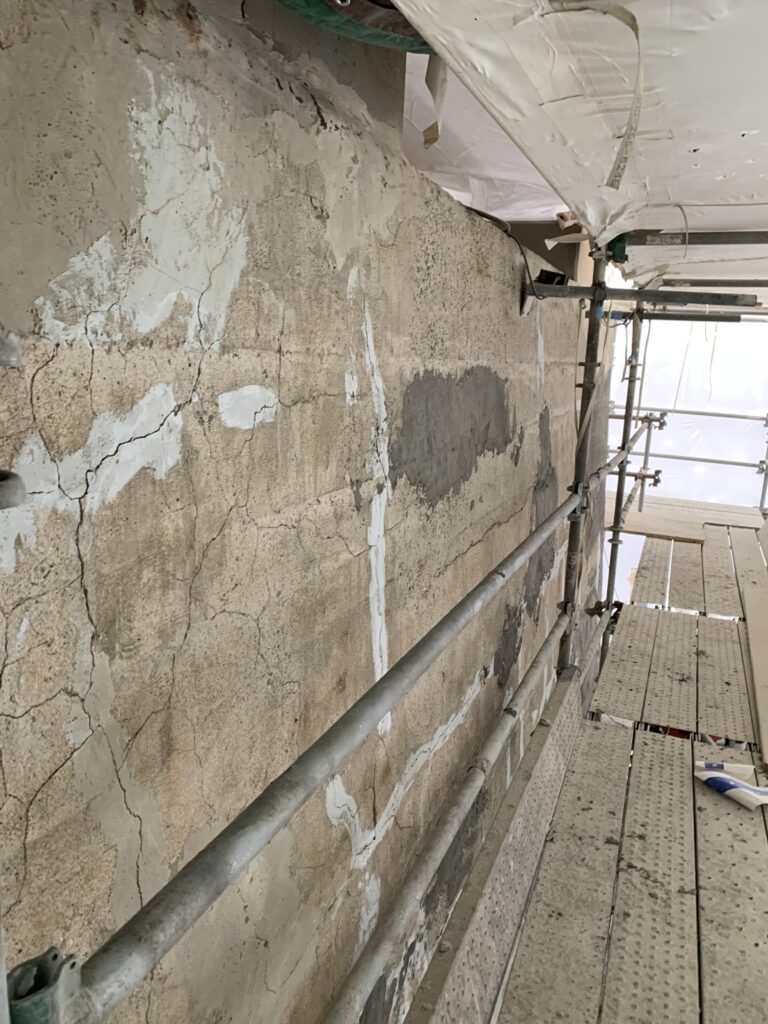
SOLUTION - THE TYFO SYSTEM INSTALLED
Fyfe engineers recommended applying wraps of Tyfo SCH-41 with Tyfo S epoxy. A layer of epoxy paint was applied over the majority of the installation that is typically submerged when the lake is full to offer additional protection. The Tyfo systems are NSF certified which was critical as the lake is a drinking water reservoir.
FRP was identified as a good fit for this project as it added a protective jacket around the piers, could be installed in a short period of time, and required only a small footprint for installation. A more traditional rehabilitation, such as shotcrete would have been more time-consuming, and the dust particles
created are typically harder to contain. Containment was vital due to the reservoir being used for drinking water supplies.
An important objective for the repair was to limit water intrusion into the piers; FRP is the ideal solution to meet this objective.
Although not specified, the installed FRP also adds some marginal strength to the pier. Other waterproofing membranes do not offer the hardness and durability of FRP. In summary, FRP was the ideal solution for this project over other repair methods due to the constrained working environment, environmental sensitivity, allowed installation duration, and the Tyfo product's impermeability.
